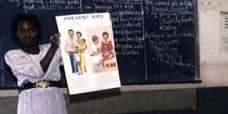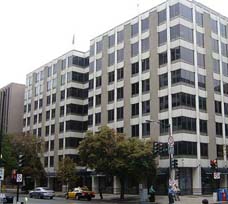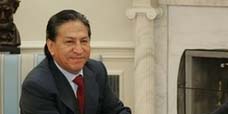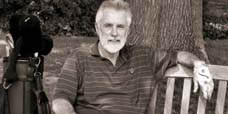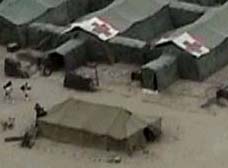2006.07.28: July 28, 2006: Headlines: COS - Cameroon: Service: Habitat for Humanity: Osceola News Gazette: Cameron RPCV Pauline Waggoner worked with fellow Habitat for Humanity volunteers from across the country and from all walks of life in St. Bernard Parish
Peace Corps Online:
Directory:
Cameroon:
Peace Corps Cameroon:
The Peace Corps in Cameroon:
2006.07.28: July 28, 2006: Headlines: COS - Cameroon: Service: Habitat for Humanity: Osceola News Gazette: Cameron RPCV Pauline Waggoner worked with fellow Habitat for Humanity volunteers from across the country and from all walks of life in St. Bernard Parish
Cameron RPCV Pauline Waggoner worked with fellow Habitat for Humanity volunteers from across the country and from all walks of life in St. Bernard Parish
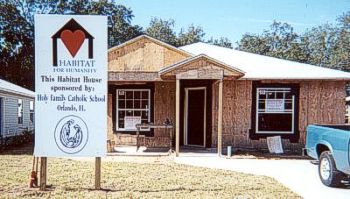
The crews stayed in an abandoned elementary school, sleeping on cots, fed by other volunteers. Each day they assembled and made their way to homes by bus. Their crew of 10 to 12 was able to completely gut six and a half houses in two weeks. So far, Habitat for Humanity has cleared out 1,500 homes, although some will have to be razed. The rebuilding of homes by Habitat will begin in late August. Waggoner said many locals had money to hire private crews to do this work, but manpower was unavailable.
Cameron RPCV Pauline Waggoner worked with fellow Habitat for Humanity volunteers from across the country and from all walks of life in St. Bernard Parish
‘Hands on’ help for Katrina victims
Mom, son help clear homes of storm debris Print E-mail
28 Jul 2006
By Jason Holland News-Gazette Staff Writer
The last time Pauline Waggoner felt such oppressive heat and humidity was as a Peace Corps volunteer in the African nation of Cameroon in the early 1980s.
Waggoner, 47, of Kissimmee, was in steamy and muggy St. Bernard Parish, about 20 miles east of downtown New Orleans, one of the many communities that faced intense, devastating flooding in the days and weeks after Hurricane Katrina.
For two weeks in June, Waggoner and her son, James Treitler, 17, worked with fellow Habitat for Humanity volunteers from across the country and from all walks of life.
They removed waist-deep piles of debris, furniture and appliances from flood-ravaged homes a wheelbarrow load at a time and stripped the structures down to empty shells in preparation for a total renovation, which is planned for August.
The crew also found and set aside memories – pictures, prayer books, anniversary gifts and family heirlooms – in hopes that one day the owners would return to reclaim their past.
“Anything we could preserve from the homes, we saved for them,” said Waggoner.
Waggoner, like the rest of the country, had watched the horrors in the aftermath of Hurricane Katrina. Her family quickly donated money to the Red Cross, but Waggoner, perhaps inspired by her experience in the Peace Corps, felt she could do more.
She decided to get involved hands-on.
“Around March or April, I was watching the news, and I was just stunned by how little had been accomplished since Katrina,” said Waggoner. “I said, ‘I’d really like to do something.’”
A third-grade teacher at Ventura Elementary School, Waggoner had the summer off. An Internet search yielded volunteer opportunities up and down the Gulf Coast, but the Habitat project was the only one she found that allowed young volunteers.
Treitler, a Gateway High School grad who will be attending the University of Florida in the fall, said giving up part of his summer to help those in need was definitely worth it. Although he had been involved in community service before, he said he hadn’t done anything on this scale.
The crews stayed in an abandoned elementary school, sleeping on cots, fed by other volunteers. Each day they assembled and made their way to homes by bus. Their crew of 10 to 12 was able to completely gut six and a half houses in two weeks. So far, Habitat for Humanity has cleared out 1,500 homes, although some will have to be razed. The rebuilding of homes by Habitat will begin in late August. Waggoner said many locals had money to hire private crews to do this work, but manpower was unavailable.
The homes the volunteers entered had been under water for more than two weeks, some completely submerged. The contents of the houses, which were floating around inside the structures, were deposited haphazardly when floodwater subsided.
“The first one was the most shocking, then we got kind of used to it,” said Treitler.
Treitler said temperatures well into the 90s and humidity that well surpassed what is common in Central Florida, made for tough work, especially with hard hat, dust mask, steel toed boots, gloves and long pants the required uniform.
“At 6 a.m. you could walk outside and be drenched in sweat,” said Waggoner.
“It was absolutely grueling to be there,” said Treitler.
Another challenge was the smell of mold and stagnant water. The worst smell, according to Treitler, came from refrigerators.
Waggoner said the work often had an emotional toll.
“The magnitude of the loss…I kept thinking of this house. What if it happened here,” said Waggoner, referring to her Kissimmee home.
The community they worked in, St. Bernard Parish, was a historic, close-knit neighborhood, said Waggoner, with families going back eight and nine generations. This sense of history also inspired a change in Waggoner. Initially, before she had arrived, she did not understand why the rebuilding was taking place if another hurricane could do it all again. Why not move away?
Waggoner came to realize what this place meant to residents and why they had to return. It had been home for generations.
St. Bernard Parish was flooded, some New Orleans residents believe, because of the Mississippi River Gulf Outlet. The manmade waterway amplified the storm surge and channeled floodwater into the parish, and is blamed for levee breaches in other areas, resident said.
Waggoner found out from local historians that residents had vigorously opposed the outlet when it was first built 40 years ago. Because of what it happened during Katrina, the reopening of the 76-mile long man-made navigation channel connecting the Gulf of Mexico to the Port of New Orleans’ Inner Harbor Navigation Canal in eastern New Orleans is being fought by locals.
Only about a quarter of previous residents had returned to the area. One gentleman, in his mid-80s, visited and they were able to return a plaque he had earned as director of tourism for the parish. A set of china plates that marked decades of anniversaries, and an old newspaper marking the Pearl Harbor attack, were also set aside at another home, said Waggoner, but no owner came while they were there.
The crew was made up of recent college graduates, other teachers, an architect and one dedicated member who had been in St. Bernard for several months. The group bonded instantly, drawn together by the work they were doing, said Waggoner.
“We met a group of people from all over, from different backgrounds and we were all the same in our desire to pitch in to help,” said Waggoner. “I consider them friends forever.”
Treitler said they recently received an e-mail from a fellow crew member, the architect from New York, who, back at home and back to a normal life, wished he were back in Louisiana.
Both say they would go back.
“It felt just like being in the Peace Corps,” said Waggoner. “The work was worthy and the people were decent.”
For more information on Habitat for Humanity efforts in Louisiana visit www.habitat-nola.org.
When this story was posted in August 2006, this was on the front page of PCOL:





Peace Corps Online The Independent News Forum serving Returned Peace Corps Volunteers
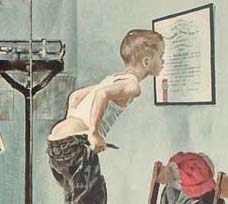 | Peace Corps' Screening and Medical Clearance
The purpose of Peace Corps' screening and medical clearance process is to ensure safe accommodation for applicants and minimize undue risk exposure for volunteers to allow PCVS to complete their service without compromising their entry health status. To further these goals, PCOL has obtained a copy of the Peace Corps Screening Guidelines Manual through the Freedom of Information Act (FOIA) and has posted it in the "Peace Corps Library." Applicants and Medical Professionals (especially those who have already served as volunteers) are urged to review the guidelines and leave their comments and suggestions. Then read the story of one RPCV's journey through medical screening and his suggestions for changes to the process. |
 | Gates charity races to spend billions
Warren E. Buffett’s gift of $31 billion to the Bill and Melinda Gates Foundation means that for tax reasons, starting in 2009, the foundation must distribute $3 billion annually, or a little more than twice what it distributed last year.
PCOL Comment: The Foundation says that "preventing the spread of HIV is the most durable long-term solution to the AIDS epidemic, and a top priority for the foundation." Peace Corps Volunteers and Returned Volunteers have been doing just that in AIDS Education for the past 15 years. Why not consider a $100M annual contribution to the Peace Corps to put 2,500 additional volunteers in the field to expand AIDS education worldwide? |
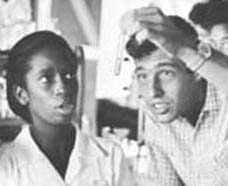 | The Peace Corps is "fashionable" again
The LA Times says that "the Peace Corps is booming again and "It's hard to know exactly what's behind the resurgence." PCOL Comment: Since the founding of the Peace Corps 45 years ago, Americans have answered Kennedy's call: "Ask not what your country can do for you--ask what you can do for your country. My fellow citizens of the world: ask not what America will do for you, but what together we can do for the freedom of man." Over 182,000 have served. Another 200,000 have applied and been unable to serve because of lack of Congressional funding. The Peace Corps has never gone out of fashion. It's Congress that hasn't been keeping pace. |
 | Changing the Face of Hunger
In his new book, Former Congressman Tony Hall (RPCV Thailand) says humanitarian aid is the most potent weapon the United States can deploy against terrorism. An evangelical Christian, he is a big believer in faith-based organizations in the fight against hunger. Members of Congress have recently recommended that Hall be appointed special envoy to Sudan to focus on ending the genocide in Darfur. |
 | PC will not return to East Timor in 2006
Volunteers serving in East Timor have safely left the country as a result of the recent civil unrest and government instability. Latest: The Peace Corps has informed us that at this time, the Peace Corps has no plans to re-enter the country in 2006. The Peace Corps recently sent a letter offering eligible volunteers the opportunity to reinstate their service in another country. |
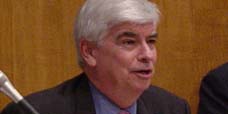 | Chris Dodd considers run for the White House
Senator Chris Dodd plans to spend the next six to eight months raising money and reaching out to Democrats around the country to gauge his viability as a candidate. Just how far Dodd can go depends largely on his ability to reach Democrats looking for an alternative to Hillary Clinton. PCOL Comment: Dodd served as a Volunteer in the Dominican Republic and has been one of the strongest supporters of the Peace Corps in Congress. |
 | Vasquez testifies before Senate Committee
Director Vasquez testifies before the Senate Foreign Relations Committee on his nomination as the new Representative to the United Nations Agencies for Food and Agriculture replacing Tony Hall. He has been the third longest serving Peace Corps Director after Loret Ruppe Miller and Sargent Shriver. PCOL Comment: Read our thanks to Director Vasquez for his service to the Peace Corps. |
 | Peace Corps stonewalls on FOIA request
The Ashland Daily Tidings reports that Peace Corps has blocked their request for information on the Volkart case. "After the Tidings requested information pertaining to why Volkart was denied the position — on March 2 — the newspaper received a letter from the Peace Corps FOIA officer stating the requested information was protected under an exemption of the act." The Dayton Daily News had similar problems with FOIA requests for their award winning series on Volunteer Safety and Security. |
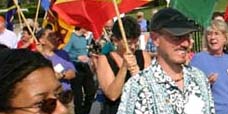 | PCOL readership increases 100%
Monthly readership on "Peace Corps Online" has increased in the past twelve months to 350,000 visitors - over eleven thousand every day - a 100% increase since this time last year. Thanks again, RPCVs and Friends of the Peace Corps, for making PCOL your source of information for the Peace Corps community. And thanks for supporting the Peace Corps Library and History of the Peace Corps. Stay tuned, the best is yet to come. |
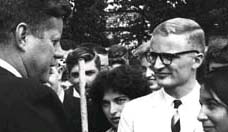 | History of the Peace Corps
PCOL is proud to announce that Phase One of the "History of the Peace Corps" is now available online. This installment includes over 5,000 pages of primary source documents from the archives of the Peace Corps including every issue of "Peace Corps News," "Peace Corps Times," "Peace Corps Volunteer," "Action Update," and every annual report of the Peace Corps to Congress since 1961. "Ask Not" is an ongoing project. Read how you can help. |
 | RPCV admits to abuse while in Peace Corps
Timothy Ronald Obert has pleaded guilty to sexually abusing a minor in Costa Rica while serving there as a Peace Corps volunteer. "The Peace Corps has a zero tolerance policy for misconduct that violates the law or standards of conduct established by the Peace Corps," said Peace Corps Director Gaddi H. Vasquez. Could inadequate screening have been partly to blame? Mr. Obert's resume, which he had submitted to the Peace Corps in support of his application to become a Peace Corps Volunteer, showed that he had repeatedly sought and obtained positions working with underprivileged children. Read what RPCVs have to say about this case. |
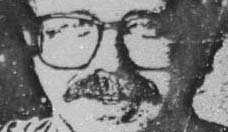 | Why blurring the lines puts PCVs in danger
When the National Call to Service legislation was amended to include Peace Corps in December of 2002, this country had not yet invaded Iraq and was not in prolonged military engagement in the Middle East, as it is now. Read the story of how one volunteer spent three years in captivity from 1976 to 1980 as the hostage of a insurrection group in Colombia in Joanne Marie Roll's op-ed on why this legislation may put soldier/PCVs in the same kind of danger. Latest: Read the ongoing dialog on the subject. |
Read the stories and leave your comments.

Some postings on Peace Corps Online are provided to the individual members of this group without permission of the copyright owner for the non-profit purposes of criticism, comment, education, scholarship, and research under the "Fair Use" provisions of U.S. Government copyright laws and they may not be distributed further without permission of the copyright owner. Peace Corps Online does not vouch for the accuracy of the content of the postings, which is the sole responsibility of the copyright holder.
Story Source: Osceola News Gazette
This story has been posted in the following forums: : Headlines; COS - Cameroon; Service; Habitat for Humanity
PCOL33816
44







